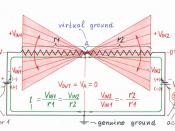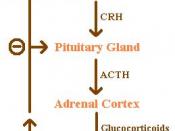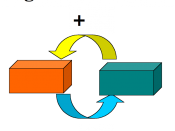Homeostasis is the 'maintenance of equilibrium in a biological system by means of an automatic mechanism that counteracts influences tending towards disequilibria'. Homeostatic mechanisms operate at all levels within living systems, including the molecular, cellular, and population levels. in humans homeostasis involves the constant monitoring and regulating of numerous factors including, oxygen and carbon dioxide levels, nutrient and hormone levels and inorganic and organic substances. The concentrations of these substances in the body fluid remain unchanged, within limits, despite changes in the external environment. There are two general ways in which the body can respond to changes, these being positive and negative feedback.
Negative Feedback
Negative feedback causes the body to respond in such a way as to reverse the direction of a change and this tends to keep the internal environment at a constant, thus maintaining homeostasis. Sensors and receptors are what bring about a reaction to ensure conditions within the body remain favourable.
Examples of negative feedback are as follows.
Blood glucose levels
The receptors of the pancreas are responsible for monitoring the blood glucose levels. The alpha-cells of the Islets of Langerhans release glucagons when glucose levels are low. Glucagons promote the conversion of glycogen into glucose; the lack of glucose can then be compensated for by the new supply of glucose brought about from glucagons. The beta cells of the Islets of Langerhans release insulin when the levels of glucose in the blood is high. Insulin promotes the conversion of glucose into glycogen and this can be stored in the liver for later use.
Fight or flight
In emergencies adrenaline is released by the body to override the homeostatic control of glucose levels and promotes the breakdown of glycogen into glucose. Adrenaline is secreted by the adrenal gland and its secretion leads to increased heart rate,


